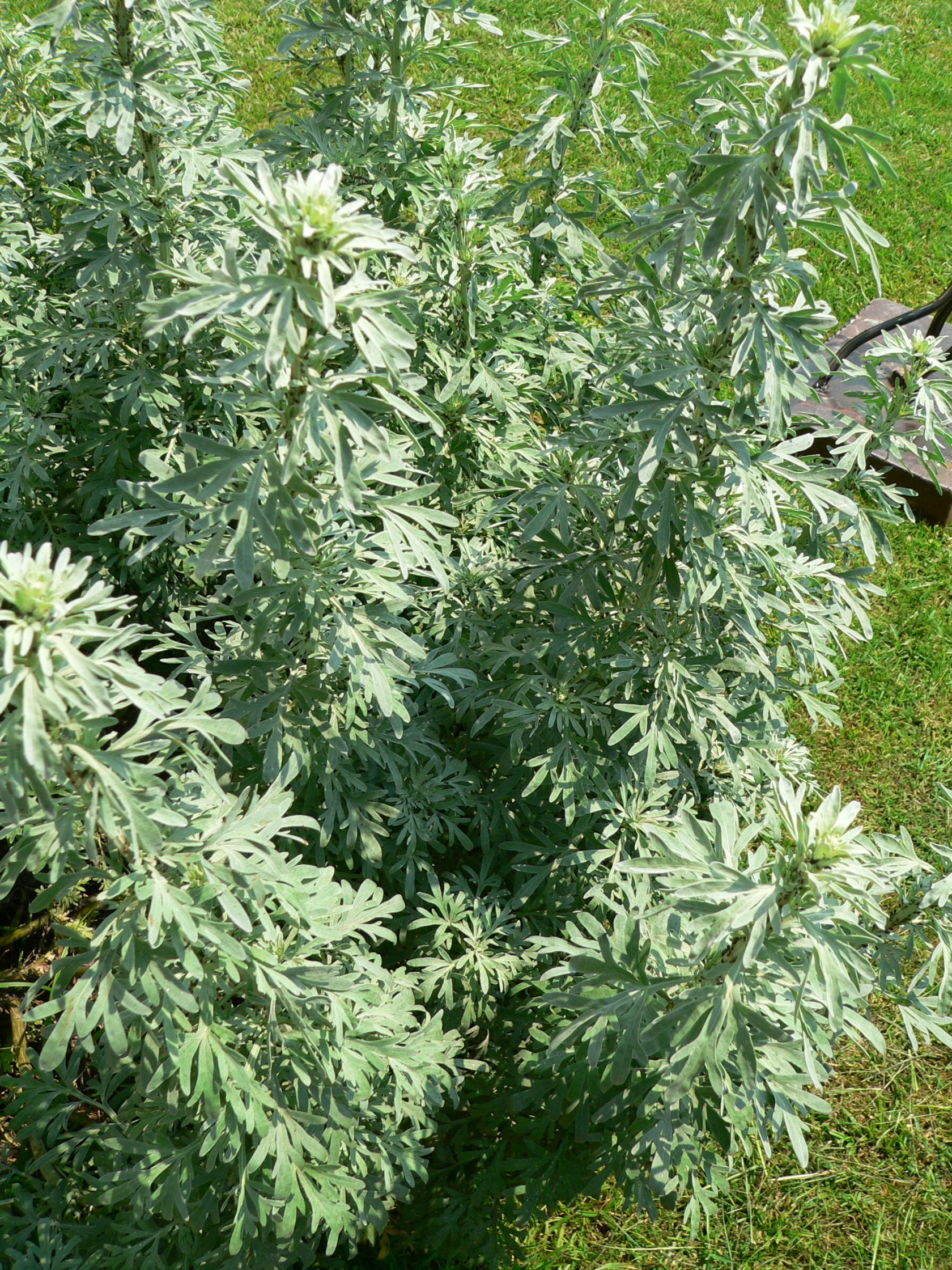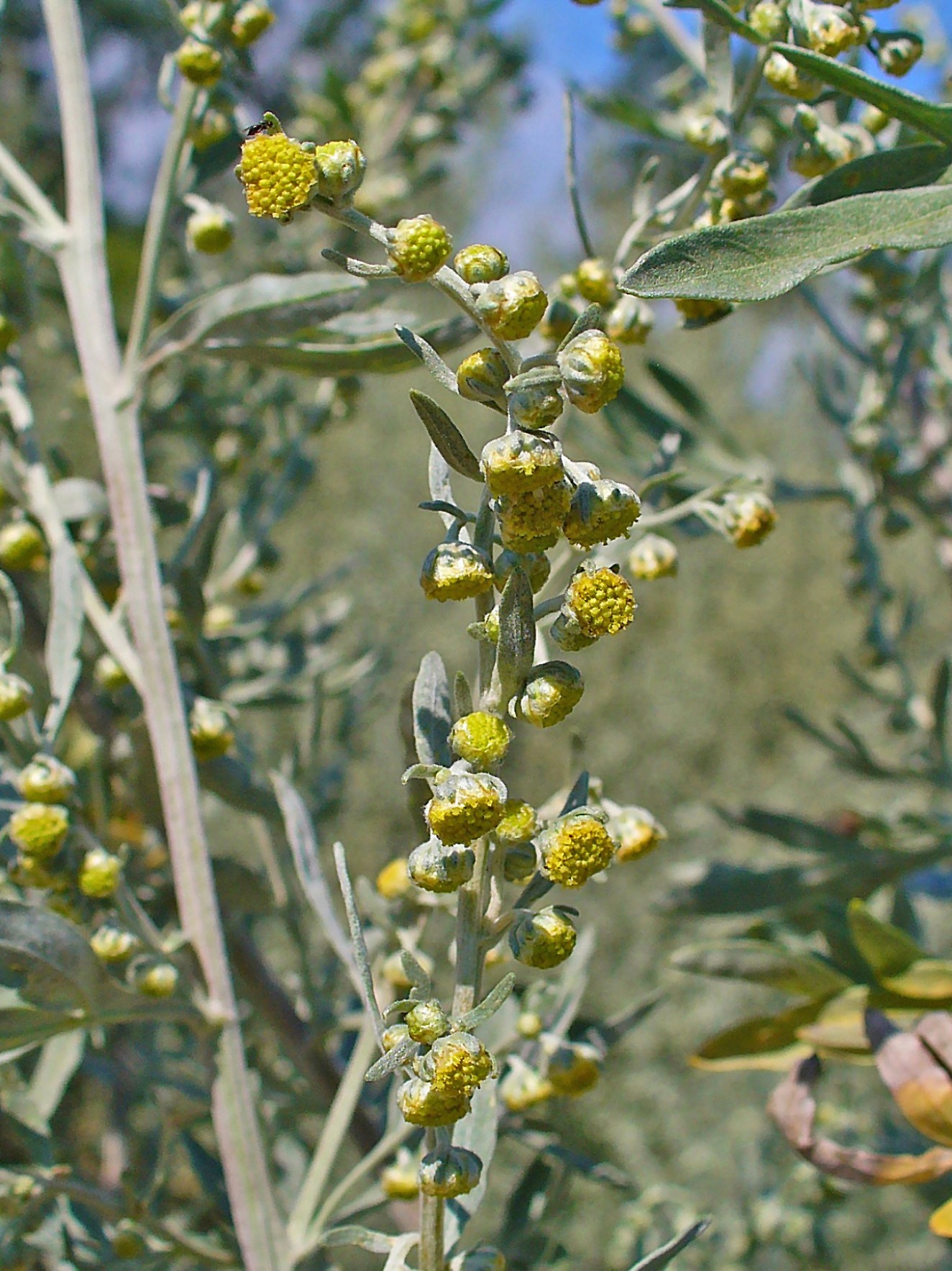Wormwood
 Common Name: Wormwood, hollygrass, assensio, bitter sagebrush, ajorizo
Common Name: Wormwood, hollygrass, assensio, bitter sagebrush, ajorizo
Scientific Name: Artemisa absintium
Climate: Temperate
Plant Description: Perennial herbaceous plant, aromatic and bitter, 40 to 150 cm tall. It has a woody and hard rhizome, the leaves are bluish-green covered with fine silvery silky hair on both sides that feels soft to the touch. The lower basal leaves can measure up to 25 cm long, the upper ones have short petioles when present. The stem is erect and silvery-white. Flowers gather in pale yellow globular heads 3 to 5 cm in diameter containing multiple tubular flowers. The fruit is very small and contains only one seed, seeds spread by gravity.
Wormwood has been cultivated in ancient Egypt, it was distributed to Europe and central Asia, since then it has spread almost everywhere in the world because it is an easy crop to grow.
Cultivation: It grows well in rocky sandy soils well drained and with abundance of organic matter, it prefers dry mountain terrain, will not stand clayey soils. The plant is very drought-resistant, although production is improved with moderate rains.
Wormwood likes full sun but will tolerate partial shade, it is very frost resistant and prefers to be shielded against strong winds.
Wormwood can be reproduced in three different ways:
Reproduction by seeds. Seeds are useful for two years, after that they decay promptly, since the seeds are very small they can be sown shallow and densely in a seedbed, when seedlings reach 15 cm they can be transplanted to a final spot.
Reproduction by splitting. At the beginning of spring suckers can be split from the plant and sown separately, this method produces less productive plants.
Reproduction by cuttings. In February, 15 cm long cuttings can be cut, remove leaves and plant at an angle 10 cm deep, must be watered and kept damp until roots emerge. At the end of the winter they can be transplanted to a final destiny. Minimum distance for planting is 40 cm between plants and 80 cm between rows. Water 4 times in summer and keep the space clean from weeds.
Blooming takes place between June and August, in winter it dries.
Harvest takes place 2 years after planting. First year will be just one crop, after that two crops per year are possible, one at midsummer and the other at the beginning of fall.
 Uses: Wormwood is known to improve digestive system health and treating problems related to indigestion, flatulence and intestinal worms thaks to absinthin and anabsinthin. It relieves liver and vesicle affectations and is considered one of the best natural antibiotics. Stops bleeding and helps scaring in wounds. It can be applied externally for pain and inflammation of sprains.
Uses: Wormwood is known to improve digestive system health and treating problems related to indigestion, flatulence and intestinal worms thaks to absinthin and anabsinthin. It relieves liver and vesicle affectations and is considered one of the best natural antibiotics. Stops bleeding and helps scaring in wounds. It can be applied externally for pain and inflammation of sprains.
Potent Emenagogue. Stimulates blood flow on pelvic area and uterus which stimulates menstruation, normalizes periods.
Insecticide. Wormwood infusion is a potent insecticide. It can be sprayed on plants and domestic animals. Applied to the skin repels mosquitoes. Pouches filled with dry wormwood placed were clothes are kept will drive moths away.
It can be abortive for pregnant women, breastfeeding mothers can excrete it thru milk which can be harmful for babies. People with gastrointestinal ulcers or gastritis must avoid it.
Pests and Diseases: Main diseases on wormwood are related to fungus Puccinia absinthii and Phacopsora compositarum, specially in spring when soil and environmental humidity are high or temperature difference between day and night are high.
References:
Bedri. (n.d.). AJENJO. La Página de Bedri. Retrieved June 30, 2020, from https://www.bedri.es/Libreta_de_apuntes/A/AJ/Ajenjo.htm
Botanical online. (2020, April 30). El cultivo del ajenjo. https://www.botanical-online.com/cultivo/ajenjo-como-plantar-cuidados
Colaboradores de Wikipedia. (2020, April 6). Artemisia absinthium. Wikipedia, La Enciclopedia Libre. https://es.wikipedia.org/wiki/Artemisia_absinthium
Olguin, S. (2010, July 24). Cultivo de ajenjo. Plantas Para Curar - Propiedades y Usos de Las Plantas Medicinales. https://www.plantasparacurar.com/cultivo-del-ajenjo/
Propiedades curativas del ajenjo y contraindicaciones. - Información general - 2020. (n.d.). Raspberry Revista Online Sobre Plantas. Retrieved June 30, 2020, from https://es.blabto.com/4262-wormwood.html
R. (2018, September 13). Ajenjo | Tusplantasmedicinales.com. Plantas Medicinales. https://www.tusplantasmedicinales.com/ajenjo/
Wikipedia contributors. (2020, May 16). Artemisia absinthium. Wikipedia. https://en.wikipedia.org/wiki/Artemisia_absinthium
En español: Ajenjo
